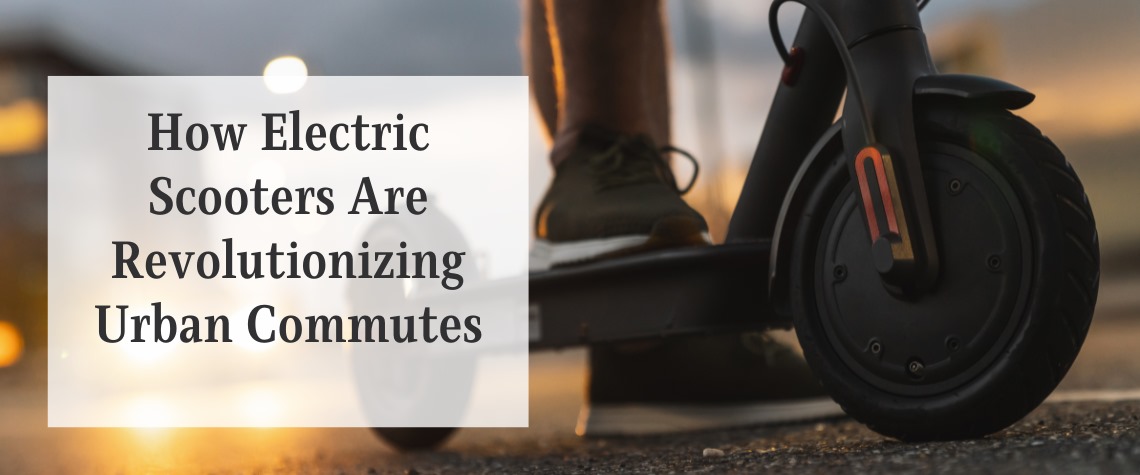
How Electric Scooters Are Revolutionizing Urban Commutes
Urban commuting is undergoing a transformation. Once dominated by cars and crowded public transport, city streets are now welcoming a new eco-friendly, efficient mode of travel—the electric scooter. For eco-conscious commuters, these nimble devices offer not just an alternative, but a solution to many urban mobility woes.
The Rise of Electric Scooters
Over the past decade, electric scooters have surged in popularity. Initially viewed as a novelty, they are now a staple on the streets of many global cities. The roots of scooters date back to the early 20th century, but it wasn’t until the advent of electric power that their potential was truly realized. Today, statistics show a remarkable increase in their adoption. According to a recent report, the global market for electric scooters is expected to surpass $41 billion by 2027, with urban areas accounting for a significant portion of this growth.
Advantages of Electric Scooters for Commuters
Environmental Benefits
Electric scooters present a clear advantage for the environment. Traditional gas-powered vehicles emit considerable amounts of carbon dioxide, contributing to air pollution and climate change. In contrast, electric scooters produce zero emissions, significantly reducing the carbon footprint of daily commutes. For every electric scooter on the road, there is a tangible decrease in harmful pollutants, making cities cleaner and more breathable.
Cost-Effectiveness
When compared to the costs associated with car ownership and public transportation, electric scooters emerge as a highly cost-effective option. Cars incur expenses such as fuel, maintenance, parking fees, and insurance. Public transport, while cheaper, still requires a monthly expenditure. Electric scooters, however, have minimal running costs—primarily the electricity required to charge them. This translates to substantial savings over time, making electric scooters an economical choice for daily commuting.
Convenience and Health
Electric scooters offer unparalleled convenience. They are lightweight, easy to park, and can weave through traffic, significantly reducing commute times. But the benefits extend beyond convenience. Riding an electric scooter engages core muscles, improves balance, and provides a moderate level of physical activity. Additionally, the mental health benefits—such as reduced stress from avoiding traffic jams—are noteworthy.
Challenges and Solutions
Safety Concerns
Safety is a primary concern for potential electric scooter users. Accidents can occur due to a variety of factors, including lack of protective gear and inattentive driving. However, these risks can be mitigated. Wearing helmets, using lights, and obeying traffic rules are essential practices that enhance safety. Manufacturers are also incorporating advanced safety features like anti-lock brakes and better suspension systems in new models.
Infrastructure Issues
Urban infrastructure is not always accommodating for electric scooters. The scarcity of dedicated lanes can pose a challenge. Cities like Paris and San Francisco are addressing this by expanding bike lanes and creating scooter-friendly paths. These infrastructural enhancements not only promote safe riding but also encourage more people to adopt electric scooters.
Regulatory Hurdles
Regulatory frameworks for electric scooters vary widely across regions, sometimes causing confusion. However, consistent and clear regulations are emerging. Many cities are now implementing standardized guidelines for scooter usage, including speed limits and designated parking zones, which help streamline their integration into urban mobility systems.
Tips for Safe and Efficient Electric Scooter Commuting
Selecting the Right Scooter
Choosing the right electric scooter is crucial. Factors to consider include battery life, weight capacity, and top speed. Commuters should opt for models with a robust build, good range, and reliable customer reviews. Brands like Xiaomi, Segway, and Razor offer a range of options suited for different needs and budgets.
Maintenance and Charging
Maintaining an electric scooter ensures longevity and optimal performance. Regularly check tire pressure, brake functionality, and battery health. Charging the scooter correctly—using the provided charger and avoiding overcharging—prolongs battery life. Most importantly, store the scooter in a dry, safe place to protect it from the elements.
Impact on Urban Communities
Changing Urban Landscapes
The rise of electric scooters is reshaping urban landscapes. They offer a solution to the congestion problems plaguing many cities. By reducing the number of cars on the road, electric scooters help decongest traffic, making streets safer and more efficient for all users.
Successful City Integrations
Several cities serve as examples of successful electric scooter integration. Cities like Copenhagen and Berlin have embraced electric scooters, providing ample infrastructure and supportive regulations. These cities report fewer traffic jams, reduced emissions, and happier commuters. These case studies highlight the potential benefits other urban areas can achieve with proper planning and implementation.
Looking to the Future
Future Predictions
The future of electric scooters looks promising. Advances in battery technology and AI are set to enhance their efficiency and user experience. We can expect longer battery life, faster charging times, and smarter navigation features. Additionally, the integration of IoT (Internet of Things) technology will offer real-time data on traffic conditions, further optimizing urban commutes.
Addressing Potential Challenges
Despite the optimistic outlook, challenges remain. Ensuring equitable access to electric scooters, preventing vandalism, and addressing environmental concerns related to battery disposal are areas that need attention. Continued innovation and collaborative efforts between governments, manufacturers, and users will be crucial in overcoming these hurdles.
Conclusion
Electric scooters are more than a trend—they are a revolutionary shift in urban commuting. Offering environmental benefits, cost savings, and improved convenience, they present a compelling case for adoption by eco-conscious commuters. As cities continue to evolve and adapt to this new mode of transport, the future of urban mobility looks brighter, cleaner, and more efficient.
If you’re considering a switch to more sustainable commuting, explore the world of electric scooters. Share this post with fellow enthusiasts and join the conversation about how electric scooters can transform your daily travel experience. Together, we can drive towards a greener future.



